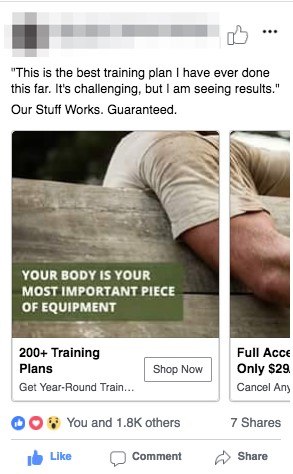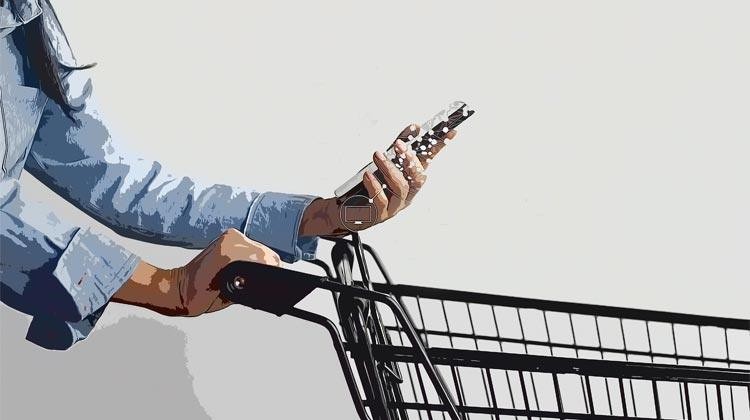Facebook Ecommerce: 3 Easy Ways to Get the Most Out of Your Ads
by Brandon Thurgood • May 19, 2018
Have you ever been scrolling through Facebook and seen an ad on Facebook for a product you’ve never seen, from a brand you’ve never heard of? Do you remember anything in particular about the ad?
In a world where new products are consistently being created and advertised for, it’s difficult to create a name for yourself in Facebook ecommerce.
The key to successful Facebook ecommerce advertising is developing a relationship with your consumer. We are going to outline 3 strategies you can utilize to grow your eCommerce business through Facebook
1. Focus on Brand Awareness
The likelihood that somebody is going to purchase your product the first time they ever interact with your brand is extremely slim. To get sales out of your Facebook ecommerce campaigns, you need to generate brand awareness across multiple touchpoints.
How many touch points a given user will need before they buy can vary a lot, but many products could require up to 10+ touchpoints before they generate a sale. With 10+ potential touchpoints, you can’t afford to pay an arm and a leg every time someone sees your ad.
To show you how a multi-touch brand awareness funnel works, let’s outline a simple, 3-touchpoint funnel you could use to drive Facebook ecommerce sales.
Touchpoint 1
You start to create a campaign and you select the ‘Conversions’ campaign because, after all, you want conversions. You select the perfect audience to show your ads to and you create the perfect ad for it. Facebook will now optimize in that audience for those most likely to convert to show your ads.
As you can imagine, the competition for those potential customers is going to be pretty high, so you’re going to be paying much more for that click. For fun, let’s say you decide to run a video views campaign.
It’s not uncommon to have somebody watch 50% of your video and only pay about $0.05 for that video view. That’s nice, but it’s hardly a sale. Fortunately, now that they have learned about your company and engaged with your brand, you can put them into a Facebook audience and retarget them.
At this point, you’ve paid $0.05 for this person to engage with your brand for the first time.
They watched a video about your company and how your product works, so they’re semi-educated about the brand. But, you still need them to engage with your business on Facebook again.
Touchpoint 2
Our next goal is to get them engaging with one of your Facebook ecommerce ads, so we take that audience that we’ve generated of people that have watched your video and place that into an ‘Engagement’ campaign.
We create an engaging ad and utilize Facebook’s algorithm to optimize for engagements on that ad (clicks, shares, comments, likes). This sort of Facebook ecommerce campaign often costs $0.30. per engagement, giving us 2 touchpoints for the total cost of $0.35.
Touchpoint 3
Now we want them to get to your site and engage with your brand outside of Facebook. Instead of jumping straight to a conversions campaign, let’s get another touchpoint for cheap again.
We can now take this second audience of people who have engaged with our ad and put them into a traffic campaign that we can optimize for landing page views. At this point, our goal isn’t just to increase brand awareness—we also want them to visit a page on our site.
You can often get clicks like these for about $0.50.
Including this campaign, we’ve now had 3 touchpoints with our customer, engaged with them in 3 different ways and we’ve spent $0.85 in total on that 1 individual. In contrast, if we had simply created a one-touch, conversion-focused campaign, the clicks would have cost $1.00 or more…for one interaction.
Using a brand awareness funnel strategy, however, we get 3x the interaction and pay less for it.
All of these costs per click were taken from a campaign that I’ve been running while testing the difference between the two approaches.
Using a brand awareness funnel instead of a direct conversion-focused funnel has decreased my cost-per-conversion by 17.8-26.37%!
2. Use Your Social Proof
Have you ever been scrolling through Facebook and noticed a post/ad that had thousands of likes and comments and you wondered what all the buzz was about? Maybe you even clicked on the ad to read through the comments or go through to the site to check things out?
Facebook likes, comments, and shares can be extremely powerful, so we want to capitalize on that.
In an engagement campaign, Facebook will optimize your ad to get the highest number of likes, comments, and shares as possible. That’s great for increasing reach, but all of those engagements are also great social proof.
While your engagement campaigns are building a retargeting audience, you can also utilize broader audiences in this campaign to continue increasing your overall social proof and audience size from individuals that haven’t seen your ad(s). I like to introduce some lookalike audiences in this campaign as well.
As this campaign runs, it will generate massive amounts of likes, shares, and comments on the ad.
Now, you might be thinking, All this social proof is well and good, but how do I use it to improve my Facebook ecommerce campaigns?
Here’s where things get fun.
By going into a preview of your ad, you can select the option to view the ad inside your Facebook page and see the comments. When you do this, you’re given a post ID at the end of the URL. If you copy that post ID, you can use that ad in another section of your account and maintain all of the social proof.
For example, let’s say I’m running the ad below in an engagement campaign where I’ve been able to generate thousands of likes and some shares as well.

If I go into my retargeting campaign and recreate this ad, I will lose all of my social proof and my ad won’t be nearly as eye catching. However, by selecting ‘use an existing post’ during the ad creation phase and pasting the post ID from the ad in my engagement campaign, I can create a second ad that maintains the same social proof.
In the accounts I manage, I like to use my high engagement ads in my retargeting campaigns to get a higher volume of clicks on these ads from individuals that have already engaged with my brand multiple times.
I want to make sure those customers are getting back to my site to complete a purchase, so I like to capitalize on the social proof I’ve already earned in my engagement campaigns.
3. Create Dynamic Ads
Whether you call them Dynamic Product Ads (DPA’s), Dynamic Retargeting, or Dynamic Carousels, you need to be using dynamic ads. This is going to be your bread and butter.
You’ve gone through all the work to get your customers to your site and viewing your product pages, but if they drop-off now and you’re not utilizing a dynamic retargeting strategy, all that effort was a complete waste.
To pull this off, you’ll want to use a ‘Catalog Sales’ campaign. This campaign type allows you to select the product catalog that you have created for your site and show the exact product images that are hosted on your site as your ad.
When the product catalog is properly associated with your Facebook Pixel, you are able to track what products an individual has seen (or added to his/her cart) and continue to show them the products that they were most interested in. This will remind them to come back and complete their purchase.
In the screenshot earlier in this article, you can clearly see that this style of campaign delivers incredible results—and for obvious reasons.
At this point, an individual has already watched one of my videos, engaged with an ad on Facebook, clicked through to the site and organically navigated to the section/product that interested them most and I’ve been able to show them that product the next time they were on Facebook.
Across all of these touchpoints, they’ve developed a relationship with the brand and decided what they were most interested in. The ads just helped them through their purchase journey.
Facebook Ecommerce
Getting the right funnel Facebook ecommerce strategy in place for your business can take some time and heavy optimization, but developing a strong relationship with an individual doesn’t just make them a one-time customer, but creates a relationship that produces a life-long customer.
If you’d like to learn further about any of the steps outlined above or how it can be set up for your specific eCommerce business, let me know here or in the comments. I’d be happy to help!






